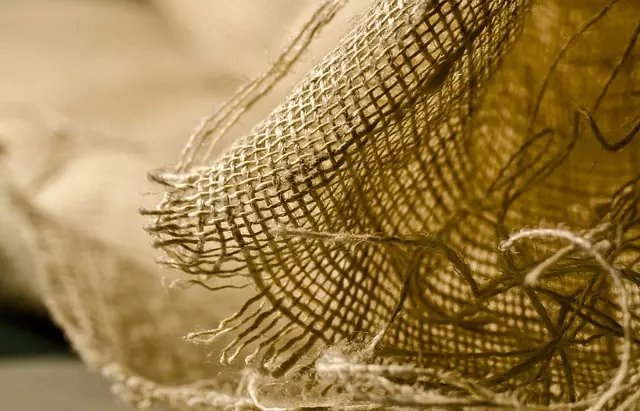The analysis compares Maeng Da and Red Bali kratom strains for their roles in athletic recovery, noting their distinct alkaloid profiles and effects. Maeng Da, rich in mitragynine and 7-hydroxymitragynine, offers energizing benefits that can enhance endurance and focus, making it a favorite for athletes looking to sustain stamina during training. In contrast, Red Bali is noted for its analgesic and calming properties, which are effective in managing muscle soreness and promoting restorative sleep, key factors in muscle repair. Both strains interact with opioid receptors to provide pain relief and stimulation, but at different dosages and for different purposes. Maeng Da is preferable for those needing sustained energy to avoid fatigue, while Red Bali is chosen for its relaxing effects to aid in recovery. The section advises individuals to consider their personal recovery needs and respond to these strains, emphasizing the importance of proper dosing, understanding personal tolerance, and aligning kratom intake with exercise routines for optimal results. It also stresses adherence to legal regulations and cautions against using these substances without medical guidance due to individual sensitivity variations. This comparison highlights that both Maeng Da and Red Bali have their unique advantages in supporting post-workout recovery, and users should tailor their choice based on their specific wellness goals and how they respond to each strain.
Exploring the integration of kratom into athletic recovery routines, this article delves into the distinct effects of Maeng Da and Red Bali for post-training rejuvenation. Understanding the alkaloid profiles that underpin each strain’s unique impact on muscle soreness and endurance is crucial for optimizing your workout recovery strategies. Join us as we compare Maeng Da and Red Bali, shedding light on their roles in enhancing athletic performance and promoting a swift return to peak condition.
- Understanding Kratom's Role in Training Recovery: Maeng Da vs Red Bali
- The Alkaloid Profiles and Effects on Muscle Soreness and Endurance
- Comparing Maeng Da and Red Bali for Optimal Post-Workout Recovery Strategies
Understanding Kratom's Role in Training Recovery: Maeng Da vs Red Bali

Kratom, a tropical tree native to Southeast Asia, has garnered attention in various health and wellness circles, particularly for its potential role in post-exercise recovery. Within the kratom realm, strains like Maeng Da and Red Bali are frequently discussed for their distinct effects on muscle recuperation and overall training recovery.
Maeng Da kratom is renowned for its potent alkaloid profile, which includes 7-hydroxymitragynine and mitragynine, the primary compounds responsible for its therapeutic properties. Users often turn to Maeng Da for its invigorating effects without the sedative qualities that can accompany other strains. Its stimulant-like properties may help in enhancing stamina and endurance during workouts, while also aiding in the management of pain after intense training sessions. On the other hand, Red Bali kratom is celebrated for its relaxing and analgesic effects, which can be beneficial for recovery by potentially reducing muscle soreness and promoting a state conducive to restorative sleep, critical for muscle repair and overall regeneration. Both strains offer unique advantages; however, their effects are strain-specific and can vary from one individual to another. As such, athletes and individuals engaged in regular physical activity may experiment with Maeng Da or Red Bali to determine which best complements their training recovery regimen. It is important to consider dosage, personal tolerance, and the timing of kratom intake in relation to exercise for optimal results and to adhere to local regulations regarding its use.
The Alkaloid Profiles and Effects on Muscle Soreness and Endurance

Kratom, a plant from Southeast Asia, has garnered attention within athletic and fitness communities for its potential role in training recovery. The alkaloid profiles of different kratom strains, such as Maeng Da and Red Bali, exhibit distinct properties that can influence muscle soreness and endurance. Maeng Da kratom, known for its high alkaloid content, particularly mitragynine and 7-hydroxymitragynine, is often celebrated for its stimulant effects, which may enhance focus and energy during workouts, potentially improving endurance and performance. Conversely, Red Bali kratom is revered for its relaxing yet pain-relieving qualities, which are believed to be effective in mitigating muscle soreness after intense training sessions, aiding in quicker recovery times. These alkaloids interact with the body’s opioid receptors, which can lead to both analgesic and stimulant effects, depending on the dosage and strain. Users frequently report that Maeng Da helps maintain stamina and reduce fatigue, making it a popular choice among those seeking to extend their training sessions without overtaxing their bodies. In contrast, Red Bali is often used post-exercise for its comforting effects, which can alleviate the discomfort associated with delayed onset muscle soreness (DOMS). Both strains have unique benefits that can complement a recovery protocol, though it’s essential to approach their use responsibly and within legal and safe parameters. Users should also be mindful of individual sensitivities and consult with healthcare professionals before integrating kratom into their training regimen.
Comparing Maeng Da and Red Bali for Optimal Post-Workout Recovery Strategies

When athletes and fitness enthusiasts seek to enhance their post-workout recovery, they often explore natural supplements like kratom. Within the realm of kratom strains, Maeng Da and Red Bali stand out for their potential effects on recovery. Maeng Da, known for its invigorating and pain-relieving properties, is celebrated for its balanced alkaloid profile that may support muscle repair and reduce fatigue after intense physical activity. Its stimulating yet soothing effects can be particularly beneficial for those who engage in strenuous training regimens. On the other hand, Red Bali is revered for its sedative and analgesic qualities, which may aid in relaxation and stress relief post-workout. This strain’s ability to promote a calming state of mind might further contribute to an individual’s recovery process by facilitating better sleep and reducing the likelihood of overtraining syndrome.
Comparing Maeng Da vs Red Bali for optimal post-workout recovery strategies, it’s evident that both strains offer unique benefits. Maeng Da’s stimulant effects might be more suitable for those requiring energy and focus for activities following their workout, while Red Bali’s relaxation properties could be ideal for individuals prioritizing rest and recovery. Users often report personalized experiences with these strains, highlighting the importance of individual sensitivity and preferences when choosing between Maeng Da and Red Bali. Ultimately, the selection of a kratom strain for post-workout recovery should align with one’s specific needs and goals, as both Maeng Da and Red Bali have their advantages in promoting overall well-being and recovery after physical exertion.
In conclusion, the exploration of kratom’s potential in training recovery, particularly between Maeng Da and Red Bali strains, offers valuable insights for athletes and fitness enthusiasts seeking to enhance their post-workout recuperation. The distinct alkaloid profiles of these strains suggest varying effects on muscle soreness and endurance, which can inform personalized recovery strategies. While both Maeng Da and Red Bali have their merits, understanding the nuanced differences between them is crucial for optimizing their benefits in a fitness regimen. As with any supplement, it’s essential to approach kratom with caution, adhering to recommended dosages and considering individual health factors. Future research may further elucidate the most effective ways to integrate these strains into recovery protocols, ensuring athletes can maintain peak performance with minimal downtime.






